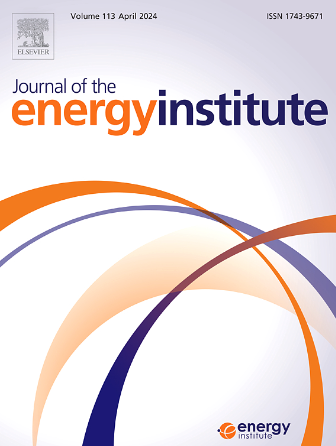Tailoring active lattice oxygen in CeO2-Based oxygen carriers for enhanced chemical looping dry reforming of methane
IF 5.6
2区 工程技术
Q2 ENERGY & FUELS
引用次数: 0
Abstract
In this work, we highlight the significance of tailoring lattice oxygen activity through controlled morphologies of CeO2-based oxygen carriers for achieving enhanced performance in chemical looping dry reforming of methane (CL-DRM). By combining physical-chemical characterizations (Raman and X-ray photoelectron spectroscoy) and density functional theory (DFT) calculations, we demonstrate that the bulk oxygen mobility, surface oxygen reactivity, and methane activation ability strongly depend on the morphology of CeO2. Notably, Pd/CeO2-Rod (Pd/CeO2-R), which has a unique (110) crystal surface, had the highest CH4 conversion (66 %) and exceptional syngas yields ∼1.7 and 3 times greater than those of Pd/CeO2-Cube (Pd/CeO2-C) and Pd/CeO2-Octahedron (Pd/CeO2-O), respectively, while maintaining high CO yields during the CO2 splitting step at 550 °C. These results underscore the feasibility and importance of tailoring the active lattice oxygen in Ce-based oxygen carriers for optimizing chemical looping processes through morphology modulation.

求助全文
约1分钟内获得全文
求助全文
来源期刊

Journal of The Energy Institute
工程技术-能源与燃料
CiteScore
10.60
自引率
5.30%
发文量
166
审稿时长
16 days
期刊介绍:
The Journal of the Energy Institute provides peer reviewed coverage of original high quality research on energy, engineering and technology.The coverage is broad and the main areas of interest include:
Combustion engineering and associated technologies; process heating; power generation; engines and propulsion; emissions and environmental pollution control; clean coal technologies; carbon abatement technologies
Emissions and environmental pollution control; safety and hazards;
Clean coal technologies; carbon abatement technologies, including carbon capture and storage, CCS;
Petroleum engineering and fuel quality, including storage and transport
Alternative energy sources; biomass utilisation and biomass conversion technologies; energy from waste, incineration and recycling
Energy conversion, energy recovery and energy efficiency; space heating, fuel cells, heat pumps and cooling systems
Energy storage
The journal''s coverage reflects changes in energy technology that result from the transition to more efficient energy production and end use together with reduced carbon emission.
 求助内容:
求助内容: 应助结果提醒方式:
应助结果提醒方式:


